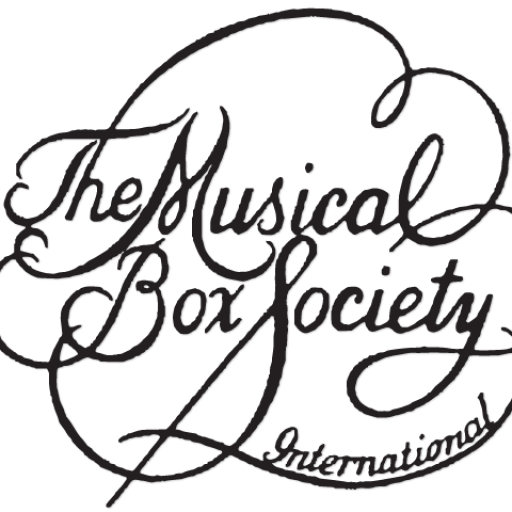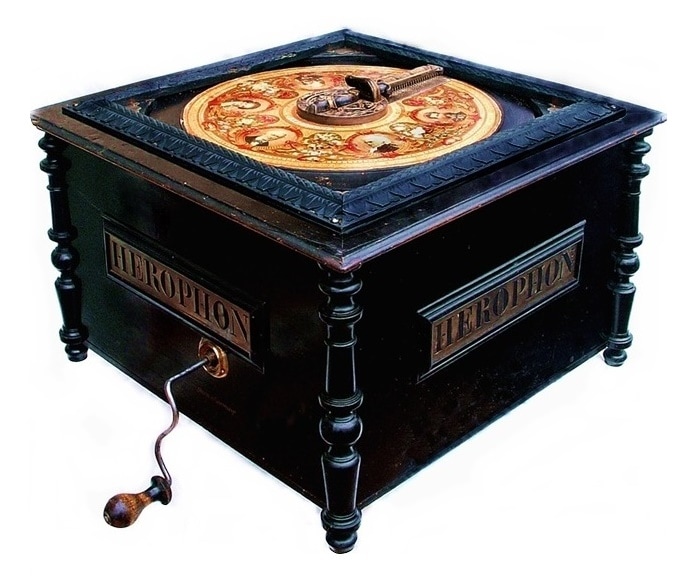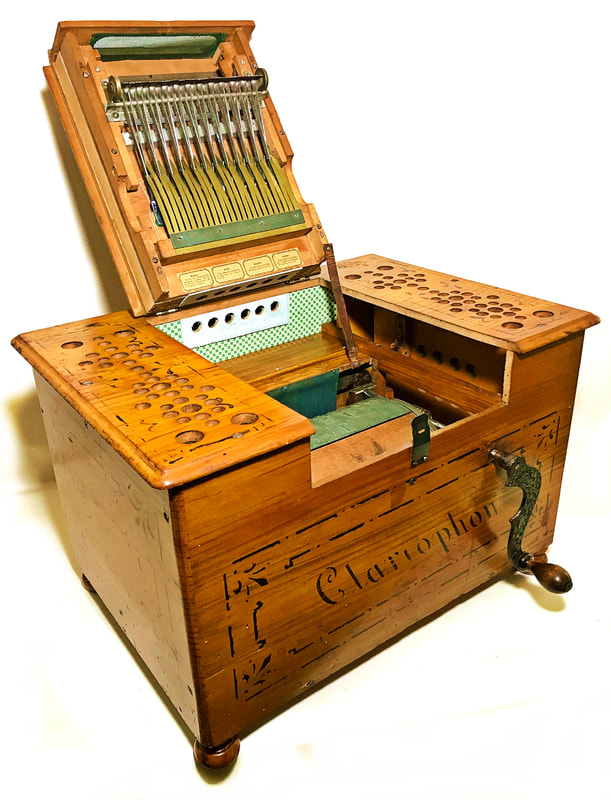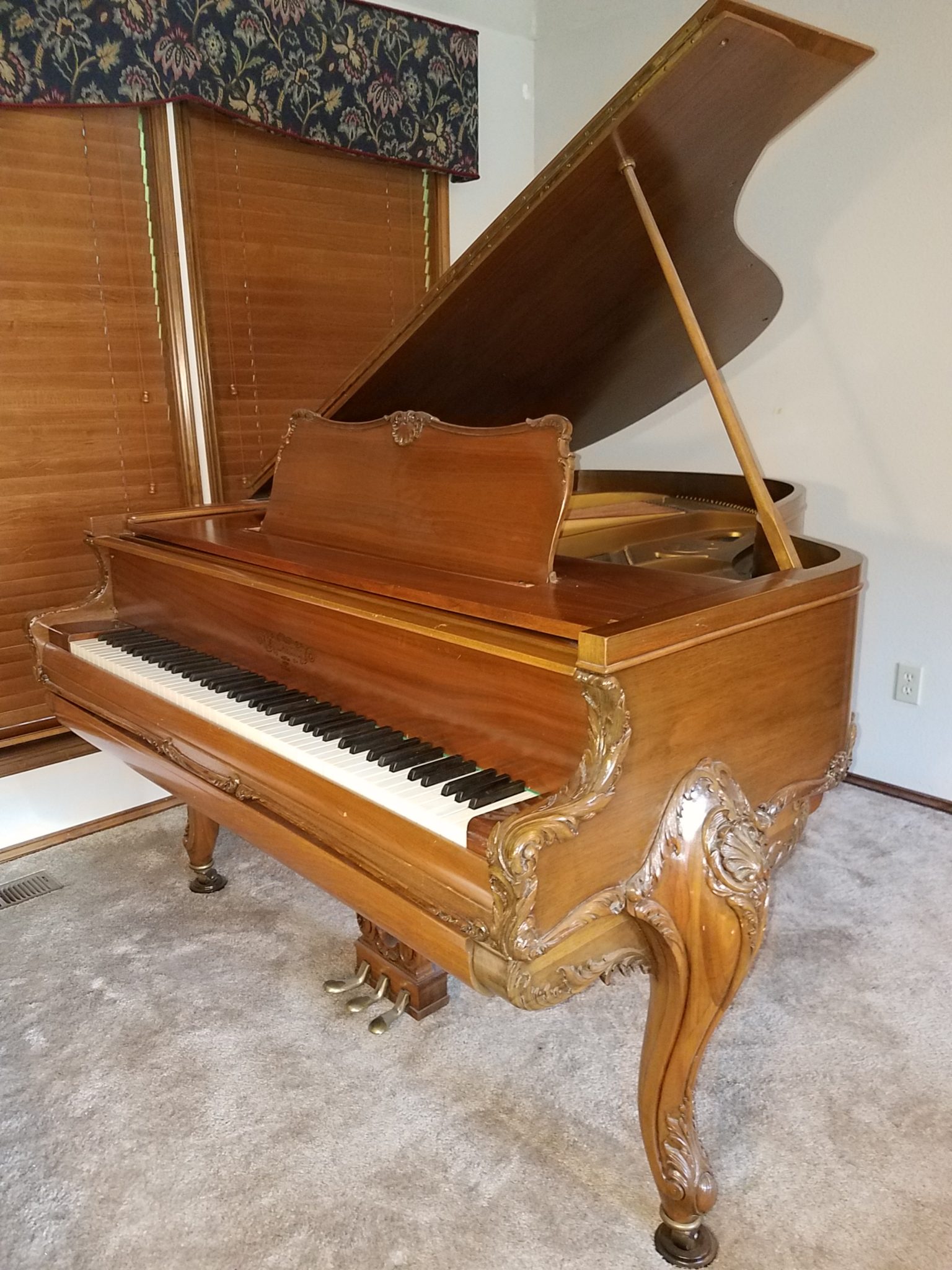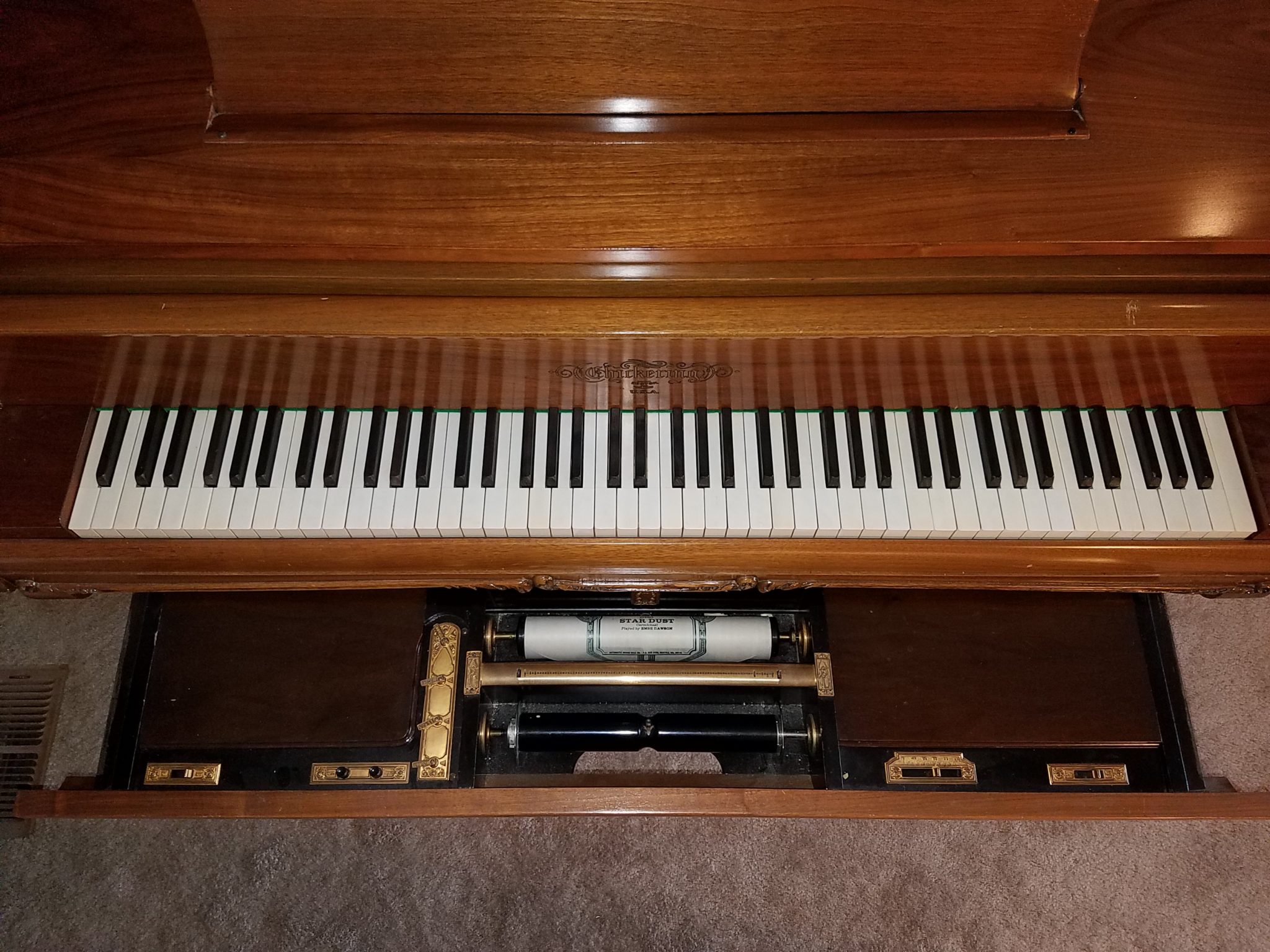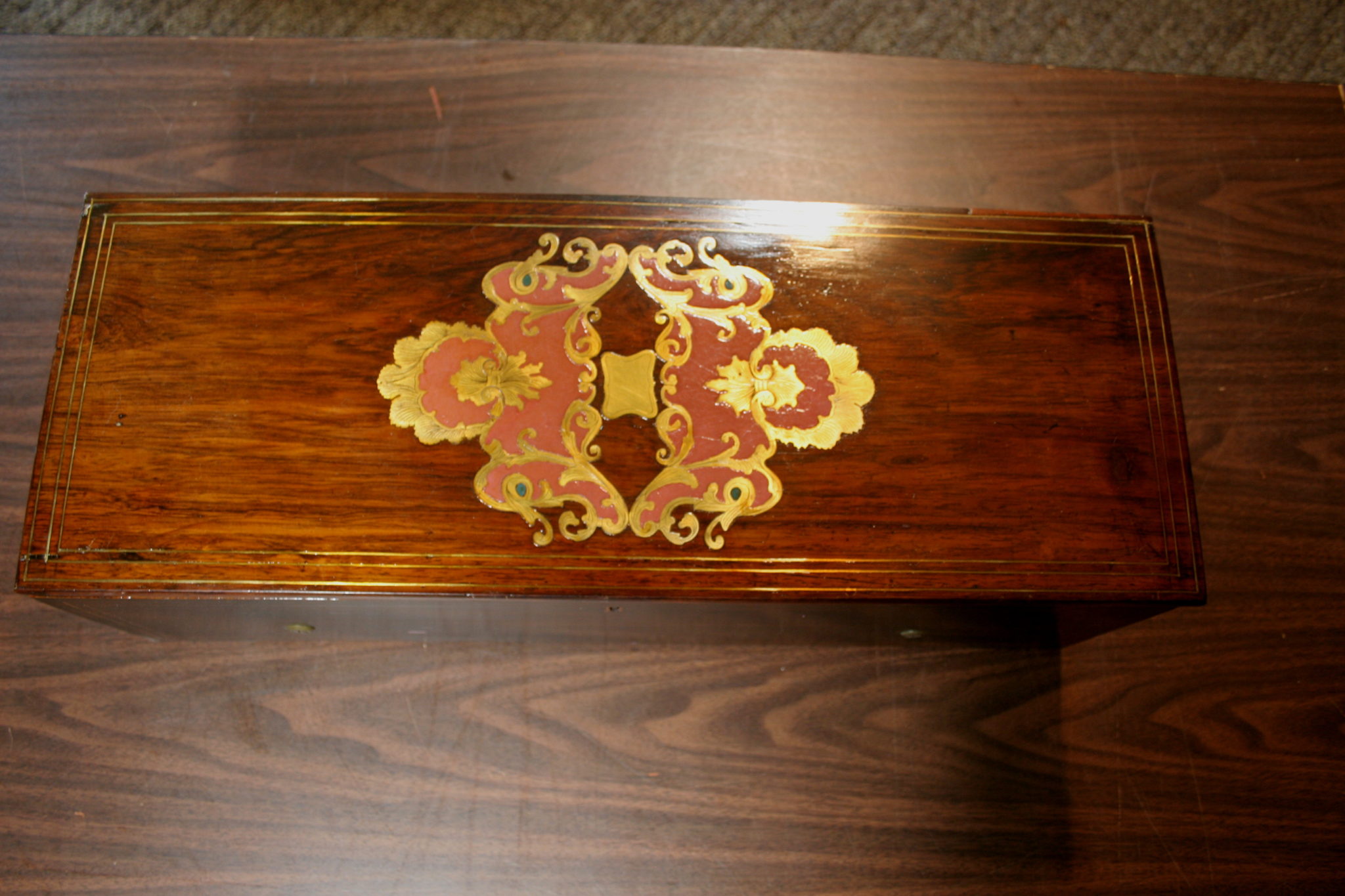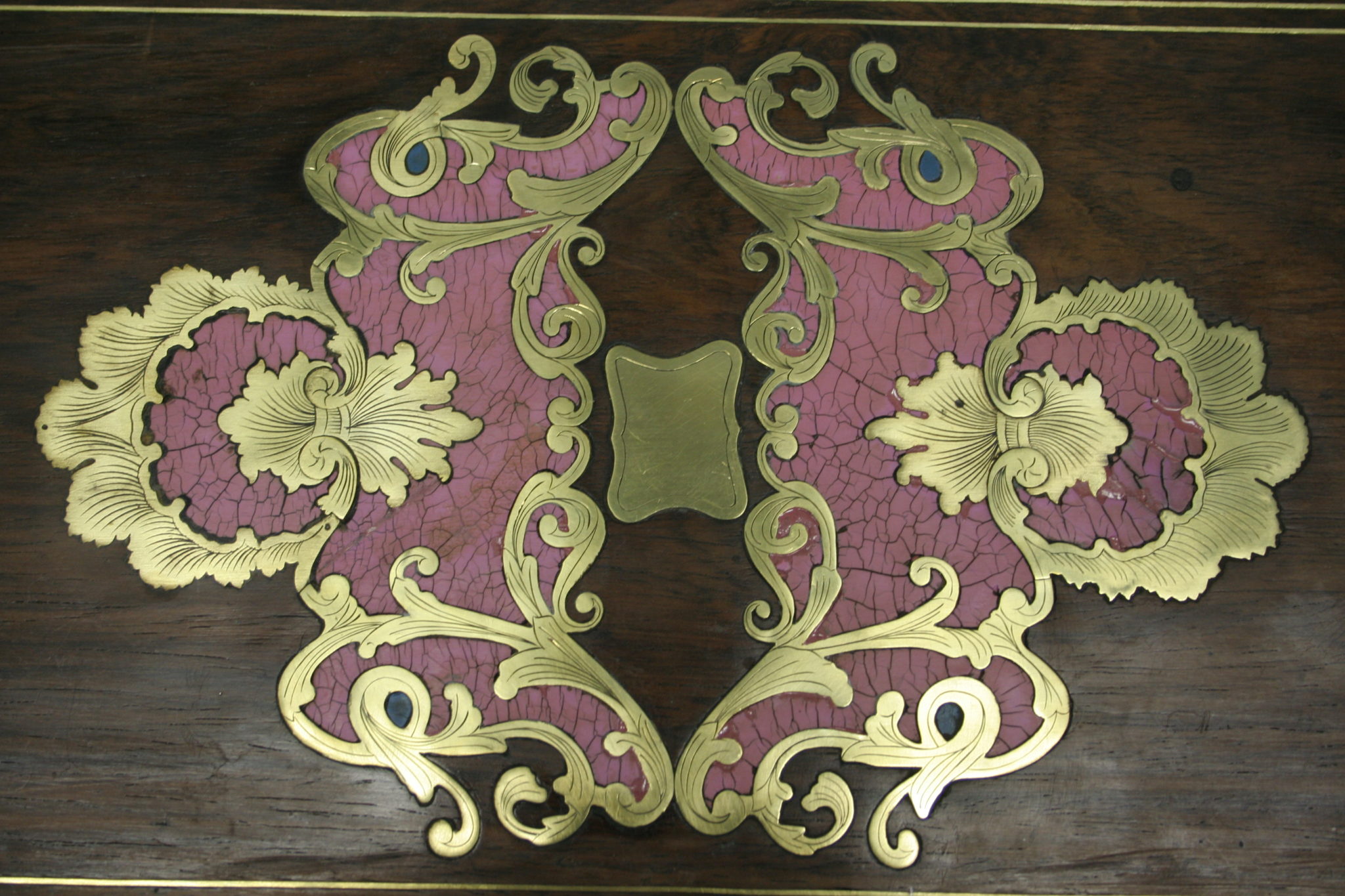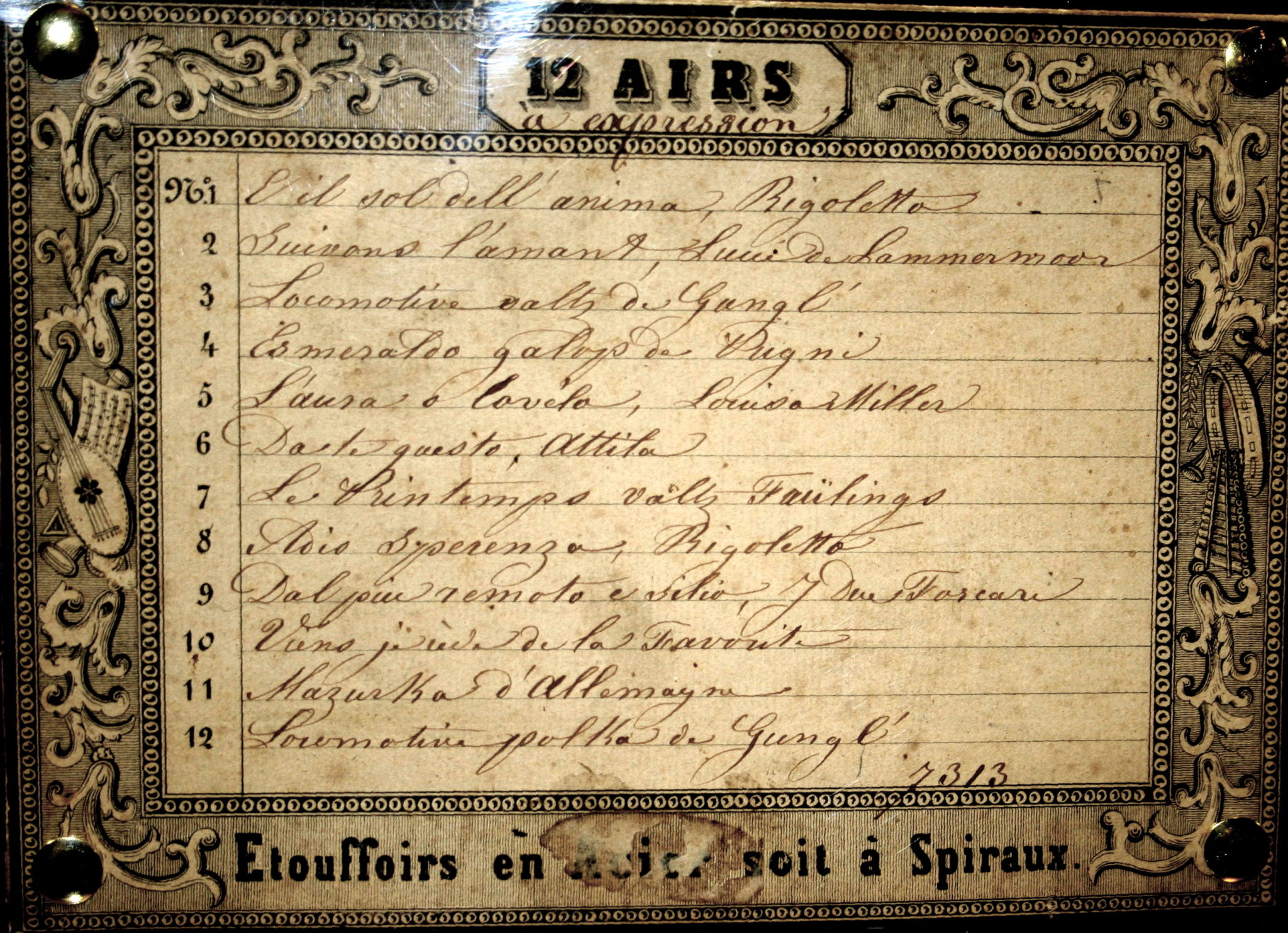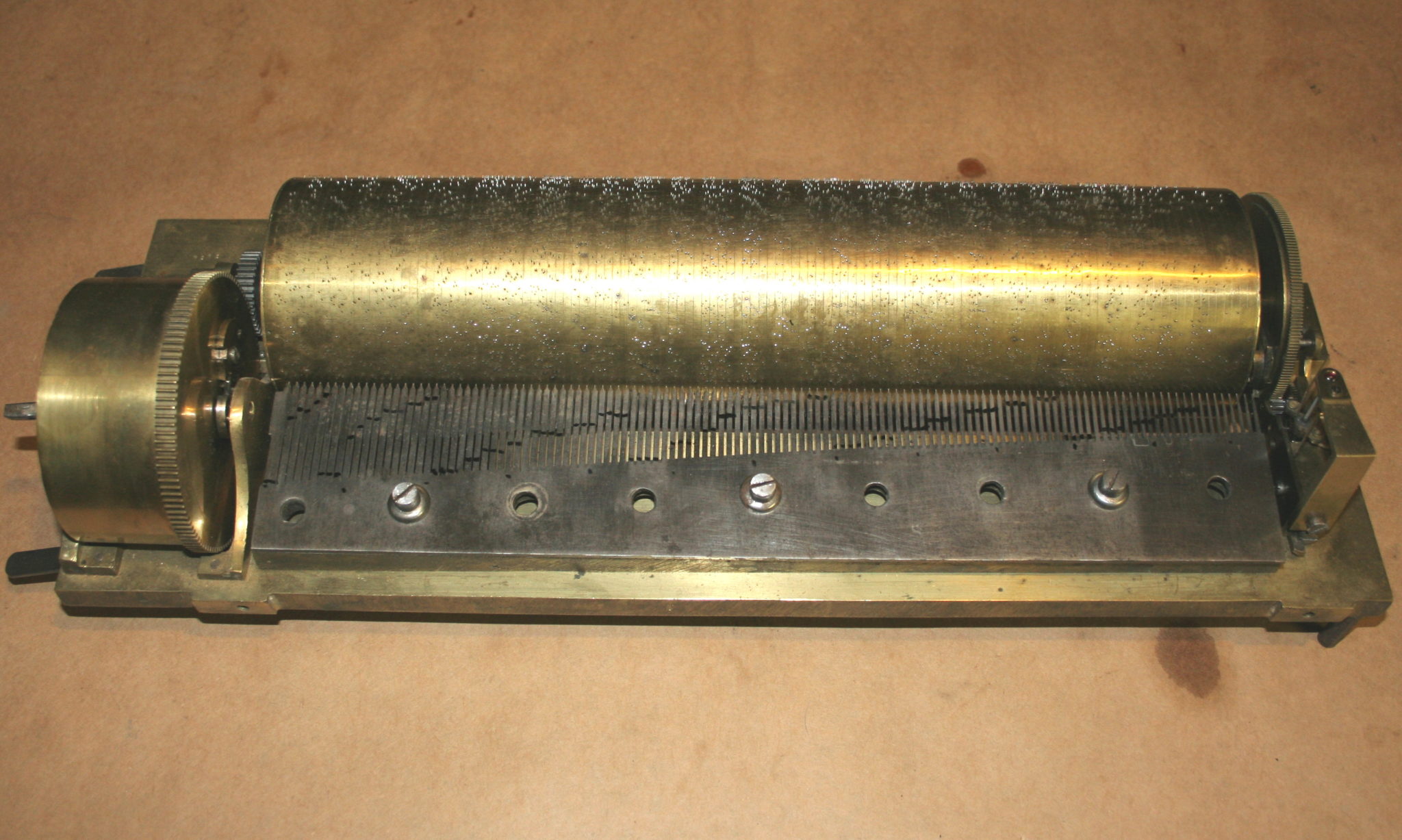The Herophon was manufactured by Euphonika of Leipzig, Germany circa 1905. This model has 24 notes. It’s unusual operation rotates the entire player mechanism while the punched cardboard disc remains stationary, This design was meant to get around a patent held by competitor Ariston – a strategy that didn’t hold up in court. (photo provided by Harold Draper of Roller Organ Restorations)
Clariophon
The Clariophone was manufactured by William Spathe of Germany. It has 24 notes. The media is most unusual: a lead sheet with raised dimples to activate the notes. The interchangeable sheets are wrapped around a wooden barrel to play.
(photo provided by Harold Draper of Roller Organ Restorations)
Autophone
This 22-note Autophone model was the first table-top organette produced in America. It was manufactured in 1878 by the Autophone Co. of Ithaca, NY.
It is operated by squeezing and releasing a bellows. That both forced air through the reeds and advance the paper roll one note. An interesting feature is that one hole position on the roll could double the duration of a note, effectively reducing the required roll length.
(photo provided by Harold Draper of Roller Organ Restorations)
Chickering Ampico A Grand
This is a 1926 Chickering grand piano with an Ampico Model A player mechanism. It is a 5’6″ grand with a walnut art case. This is an example of a reproducing piano, which differs from an standard player piano in its ability to vary the note dynamics (volume) as it plays.
The roll mechanism and volume and tempo controls are located in a pullout drawer under the keyboard.
Everything is controlled pneumatically with the exception of the electric motor that drives the vacuum pump. The pneumatics are located under the main body of the piano.
